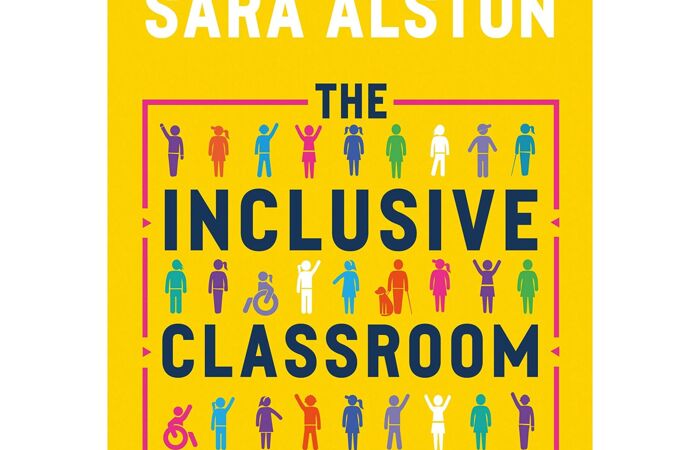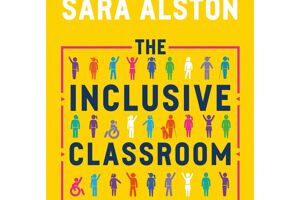Inspiration SEND Network Book Blog #7
Back
The Inclusive Classroom By Daniel Sobel and Sara Alston
How often have you come across a perception that sending students to a special school is what’s needed? Sobel and Alston make the point that special schools do not have a magic wand to “fix” students and in fact, often face the same challenges as mainstream schools. What special schools do have are staff with a greater level of training in supporting students. Staff need to have sufficient training if they are going to be confident and successful in their roles and consequently enable students with SEND to be confident and successful in the mainstream classroom.
However, before you rush to book yourself or your team on a training course about ADHD, dyslexia or DLD, it’s worth considering what this book has to say about labels. On the one hand, labels or a formal diagnosis can be hugely helpful for a child in supporting them to understand why they may be struggling with certain aspects of learning. They can in some cases support with access to funding or resources. However, Sobel and Alston suggest that labelling students is not inclusive practice: there is evidence that educators have lower expectations of those labelled as SEN. This often leads to the label becoming part of the child’s identity and we lose sight of them as an individual. Moreover, we could have multiple students with the same label who exhibit very different behaviours. For us to truly support students, we need to treat them as the individual that they are and learn how their needs exhibit when in school. As SENCOs, it is important that we work with teachers to help them be inclusive in this way. Generally, teachers are not against inclusion, but they may lack the necessary skills and knowledge to look past the labels that we give to students.
This starts by remembering that SEN encompasses strengths as well as difficulties. Too often, even as SENCOs, we focus on what difficulties the student is having rather than what their strengths are. All students will have their own strengths and it is important that we remember to focus on their strengths whilst providing support for their difficulties, so that they do not feel like there is nothing that they can do right. From a strengths-based perspective, it is then easier to adopt more inclusive language when describing students and SEND, within the classroom and the staffroom and indeed when meeting with parents and carers.
Sobel and Alston promote the idea that effective inclusion is just good teaching, in line with the idea of ensuring quality first teaching as the first step in meeting a pupil’s needs. A large part of the book is given over to what this means in practical terms, and specifically, how the authors believe a lesson should be split up into 5 different phases:
Phase 1 – Transition into the classroom and preparing for the lesson
Phase 2 – Delivering and receiving instructions and whole class engagement
Phase 3 – Individuals working as a class
Phase 4 – Individuals fitting into a group of learners
Phase 5 – The last 5 minutes
With each section, they provide useful hints around strategies that you could try that will provide a more inclusive environment and support all students.
Phase 1 focusses on consistent entry routines, so students know what to expect and any students overwhelmed during transition, especially after social time, are supported to settle and complete a job. It is important to think from the student’s perspective how they feel when they are entering the classroom. Phase 2 is all about effective communication: talking is only one part of effective communication; tone of your voice and body language also play a significant part in how what we say is perceived by the students. As teachers, we need to be aware of our own emotions and how they impact upon our communication.
The third phase of a lesson identified by Sobel and Alston involves individuals working as a class. Here they discuss differentiation: not as endless different worksheets based on the needs of each student but as curriculum and task adaptation to enable all students to be able to access them. Differentiation shouldn’t be unmanageable or overburden the teacher but should allow teachers to plan for individual students in an efficient and effective way that ensures equity in terms of learning, providing the necessary resources to allow all students to access learning rather than lowering the expectations of the curriculum to fit all students.
Group work, phase 4 in Sobel and Alston’s model, can allow the development of listening and discussion skills whilst also providing students with the opportunity to work with a range of people. Indeed many professions often rely on group work as part of the day to days processes. However, for some students, group work generates high levels of anxiety, especially if the student does not have the necessary academic or social skills to actively participate in the group. Sobel and Alston encourage us to think about the desired outcome of the task. If the activity has a high academic demand, then this might be better as an independent task. If we want students to develop their social skills more, then group work, where the social demand is high, should have a lower academic demand. When looking at group work, we have to take into account that for many students, the social interaction part of the work will be the most difficult aspect for them. We need to ensure that we have clear processes for group work such as ensuring that everyone has a partner and by having some prompts ready for groups that are struggling. Group work can be powerful, but it needs to be carefully thought through if it is going to meet the needs of each individual student.
The final phase talks about how important the last 5 minutes of the lesson can be. Used well, you can determine how much students have learnt. They suggest a simple checklist of things for students which allows you to see what students have corrected and edited during that last part. Just as at the start of the lesson, clear and consistent end of lesson routines ensure that the atmosphere remains calm and productive and mean that students know what is expected of them and are prepared for the transition point.
This book contains a wide range of tips that as teachers we should try if we want to make our classrooms more inclusive, not least of which is prioritising building relationships with students and their parents/carers. Having read this, I have shared what I had learned about effective communication with all staff this year to support some of our students who are often overwhelmed by noise. What is great about this book is that it starts by discussing the fact that SEN is hard and that as professionals we won’t get everything right all of the time. This is important for people to hear as too often we are expected to be the ultimate fount of knowledge of everything SEND. It is important that others know that when you work with SEND it is about continually learning how to support all students. I have found it to be invaluable when I am reflecting on my own practice and I would highly recommend it as a must read.
Daniel Tugwell
SENCO, Jane Austen College

